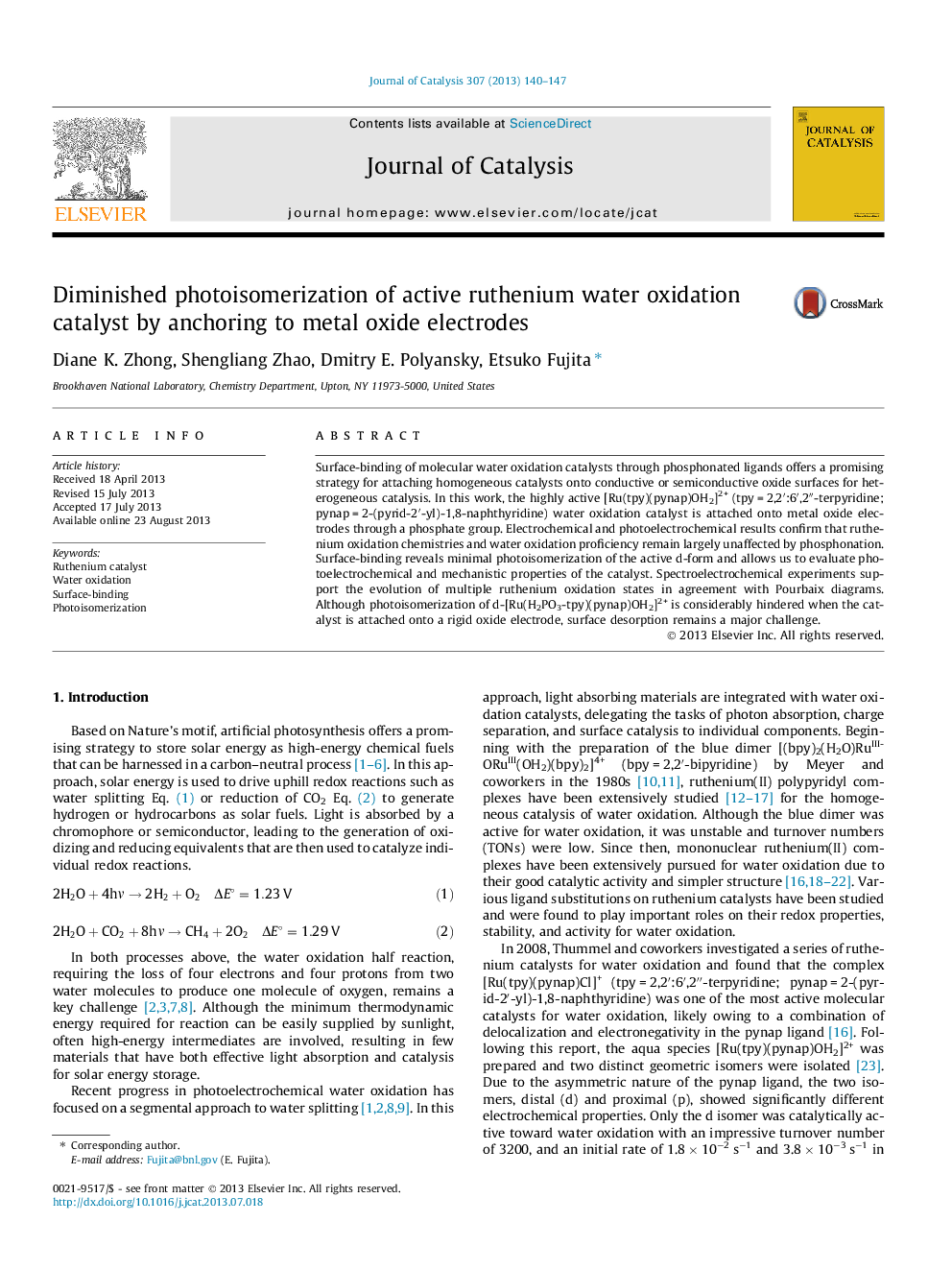| کد مقاله | کد نشریه | سال انتشار | مقاله انگلیسی | نسخه تمام متن |
|---|---|---|---|---|
| 61156 | 47567 | 2013 | 8 صفحه PDF | دانلود رایگان |

• Ru water oxidation catalysts were successfully attached onto oxide electrodes.
• Surface bound Ru catalysts exhibit the same redox properties as in solution.
• Photoisomerization of the active Ru catalyst was hindered by surface-binding.
• A WO3 photoanode with the catalyst showed enhanced photoelectrochemical activity.
Surface-binding of molecular water oxidation catalysts through phosphonated ligands offers a promising strategy for attaching homogeneous catalysts onto conductive or semiconductive oxide surfaces for heterogeneous catalysis. In this work, the highly active [Ru(tpy)(pynap)OH2]2+ (tpy = 2,2′:6′,2″-terpyridine; pynap = 2-(pyrid-2′-yl)-1,8-naphthyridine) water oxidation catalyst is attached onto metal oxide electrodes through a phosphate group. Electrochemical and photoelectrochemical results confirm that ruthenium oxidation chemistries and water oxidation proficiency remain largely unaffected by phosphonation. Surface-binding reveals minimal photoisomerization of the active d-form and allows us to evaluate photoelectrochemical and mechanistic properties of the catalyst. Spectroelectrochemical experiments support the evolution of multiple ruthenium oxidation states in agreement with Pourbaix diagrams. Although photoisomerization of d-[Ru(H2PO3-tpy)(pynap)OH2]2+ is considerably hindered when the catalyst is attached onto a rigid oxide electrode, surface desorption remains a major challenge.
Photoisomerization of a highly active Ru water oxidation catalyst, d-[Ru(tpy)(pynap)OH2]2+, into an inactive p-form was notably hindered by attachment onto metal oxide electrodes though a phosphonate anchoring group. This increased photostability allowed for photoelectrochemical and mechanistic studies of the catalyst when attached onto FTO, nanoITO, and WO3 electrodes. The redox and catalytic activity of the catalyst was found to be unaffected by surface-binding. This approach may open opportunities to investigate other unstable homogeneous catalysts for water splitting.Figure optionsDownload high-quality image (75 K)Download as PowerPoint slide
Journal: Journal of Catalysis - Volume 307, November 2013, Pages 140–147